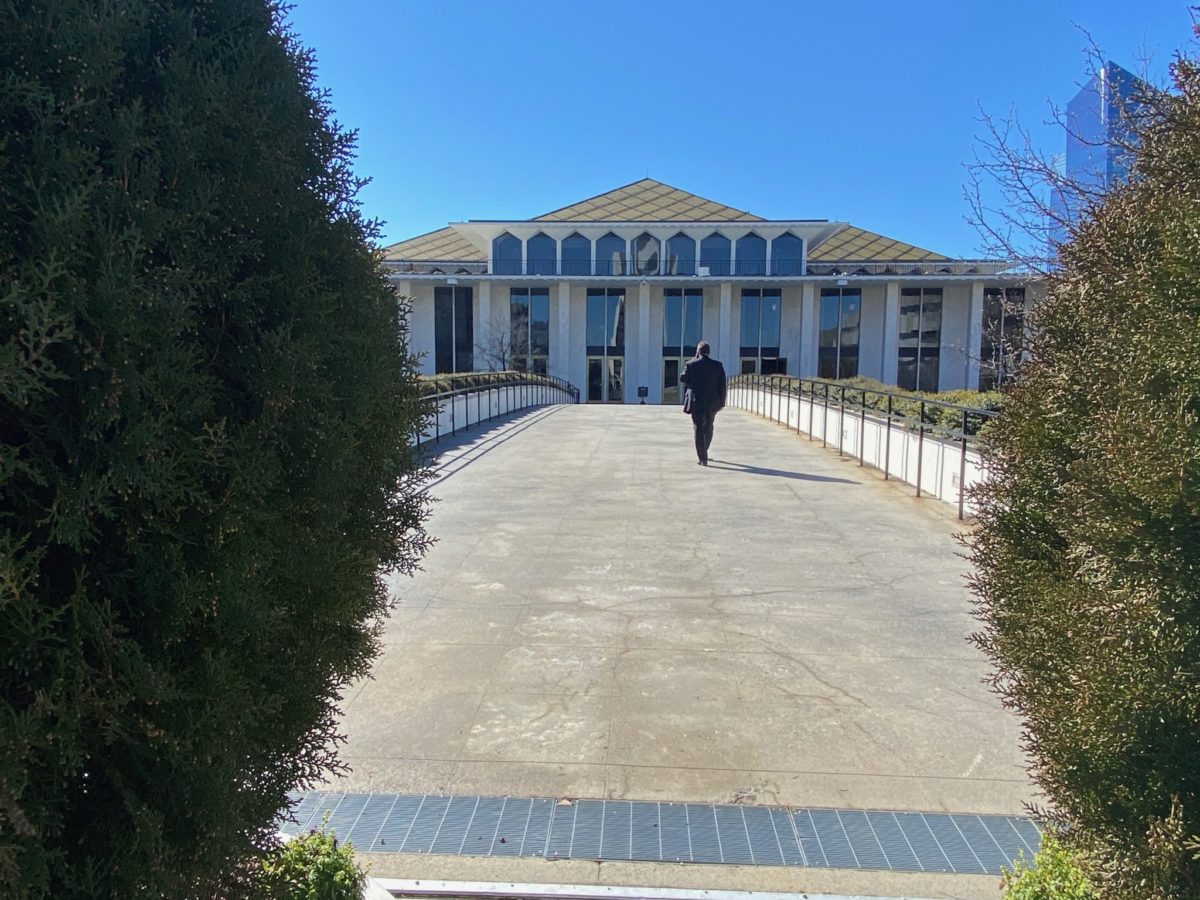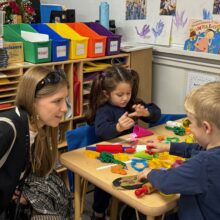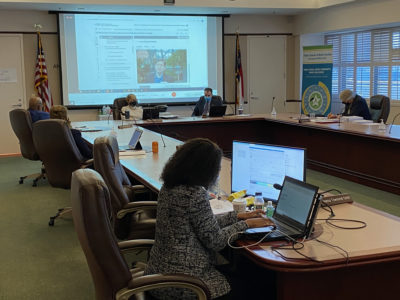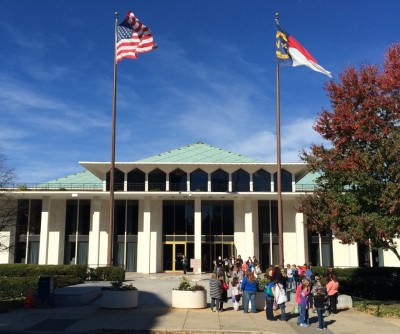
This week, the General Assembly passed a bill allocating federal COVID-19 relief to a variety of things, including public education. The bill is on its way to Gov. Roy Cooper for his signature or veto.
The legislation includes more than $140 million for public school items, including $40 million to help pay for a summer school program for at-risk students. But that money is a type of funding that the State Board of Education, rather than lawmakers, has previously allocated.
Under the most recent federal COVID-19 relief legislation, North Carolina received $1.6 billion for public schools. The bulk of that money is meant to go directly to districts to spend as they see fit, but the state is able to hold back 10% of the overall funding for emergency needs.
This was the case for previous COVID-19 relief money, and it was the State Board of Education and Department of Public Instruction (DPI) that were responsible for deciding how that money was spent.
In this COVID-19 relief bill, however, lawmakers have assumed that authority for themselves.
“State lawmakers’ approach will ensure that they are moving forward in COVID response with flexibility at the local level for summer programing, remediation in reading, mental health, cybersecurity and additional programs,” said Joseph Kyzer, spokesperson for House Speaker Tim Moore, R-Cleveland, in an email. “This prevents these funds from being tied up at the state department level.”
State Superintendent of Public Instruction Catherine Truitt said, however, that she would have preferred if that responsibility remained with the State Board and DPI.
“Speaking as the agency head, I’m disappointed that the agency won’t play a role in determining how that money is spent,” Truitt said. She went on to say that she would have preferred to work with districts to use that money to meet specific needs rather than for lawmakers to “appropriate large chunks of that money.”
State Board Chair Eric Davis agreed and said he also thought it would be more fiscally responsible to let the State Board and DPI decide how to use the money.
“We’re going to proceed on with putting together what in our joint opinion, based on the expertise of the agency … would be a good plan for our students, and we’ll see what happens,” he said.
Truitt said that their plan will use DPI’s regional case manager model of intervention so that DPI can “deliver as much hands-on support to districts as possible.”
Kyzer said that legislators reviewed legislative requests from DPI and the State Board when deciding how to allocate the money in the bill. He said that many of their requests were for recurring funding and that the COVID-19 relief funding couldn’t be used for that because it would amount to supplanting “current operations,” something that goes against federal restrictions for the use of the money.
“The General Assembly will continue communications with the Superintendent and the State Board as the budget development process continues,” he said in the email.
Kyzer also said that about $15 million of that 10% reserve will remain after the allocation of funds from the COVID-19 relief bill, and that money can be spent at the discretion of the State Board. In addition, he said language in the bill states that any of the allocated money not spent by July of next year will go back to DPI.
Here’s what’s included in the bill:
- $1 million “to collect, analyze, and report data related to the overall impacts of COVID-19 on public school units, students…”
- $10 million “to ensure that each public school unit receives a total amount from the Elementary and Secondary School Emergency Relief II (ESSER II) Fund of at least one hundred eighty dollars ($180.00) per pupil in federal grant funds…”
- $10 million “for contracted services for school health support personnel to provide additional physical and mental health support services for students in response to COVID-19…”
- $10 million for school nutrition
- $1 million to assess “cybersecurity capabilities of public schools”
- $9 million to implement a statewide cybersecurity program for public schools
- $12 million “to contract with Voyager Sopris Learning, Inc., to provide Language Essentials for Teachers of Reading and Spelling training for teachers for improving the literacy and language development of students…”
- $15 million “for the Extended Learning and Integrated Student Supports Competitive Grant Program (Program)”
- $40 million for a summer learning program for at-risk students
- A little more than $26 million “to be held in reserve by the Department to be allocated to public school units to support COVID-19 related needs, including in-person instruction programs to address learning loss and provide enrichment activities in the summer”
- A little more than $8 million for DPI to use for administrative costs
This week, the State Board of Education approved the policy that determines the distribution of the other 90% of the $1.6 billion in COVID-19 relief slated to go directly to districts. The distribution is made “in proportion to the amount of funds such units received under Title I, Part A in the most recent fiscal year,” according to a document from the State Board meeting.
Here is how the money will be distributed.
Child care
The bill discussed in the previous section also has some child care impacts. The following is from EducationNC reporter Liz Bell.
Language in the COVID-19 relief bill prohibits the state from using federal grant dollars for bonus payments for early educators. Along with other supports, like covering parent subsidy co-payments and operational grants, child care workers received bonus payments from the Division of Child Development and Early Education last year with COVID-19 relief funding. More bonus payments for early childhood teachers were expected with this round of relief through the Child Development Block Grant.
“Our teachers are the people who have been on the front lines since last March,” said Marsha Basloe, president of the Child Care Services Association. “… And to not support them with bonuses is just heartbreaking.”
After advocates pushed to have the language removed from the bill on Wednesday, Rep. Donny Lambeth, R-Forsyth, re-introduced the language on the House floor. In an interview with EducationNC, Lambeth said budget leaders wanted to reserve this funding for COVID-related costs like sanitization, testing, and vaccination. He said compensation of teachers across the education spectrum and other front-line workers will be discussed in other rounds of federal funding or in the state’s general budget.
“You could make the same case for police and fire, rescue workers, health care workers, and so we decided not to go down that path in this COVID bill … for bonuses or compensation, but to deal with it during the next COVID bill or during our normal, regular appropriations process, which we’ve also started,” Lambeth said.
Before the Senate unanimously passed the bill, Sen. Natasha Marcus, D-Mecklenburg, voiced her disagreement with the language.
“My question on that is why are we so hard on these child care workers?” Marcus said on the Senate floor. “They’re some of the worst paid essential workers in our state. Working parents rely on them. They’re putting their life on the line to care for our youngest citizens.”
School reopening
This week, the debate over how to get students back in school buildings continued. From Cooper’s veto of legislation requiring districts to bring students back to a change in state Department of Health and Human Services guidance around in-person learning, you can read almost everything you need to know in the section on in-person school in this State Board roundup.
But more has happened since that roundup was published. Speaker Moore said Thursday that a House K-12 committee will take up a local bill next week that would let some school districts reopen under plan A — full time in-person learning with minimal social distancing.
However, the governor can’t veto local bills. So, this is an attempt to get around the fact that the governor has already shot down one attempt from lawmakers to reopen all schools, even though the Senate now has a possible second chance at overriding that veto. And this indicates a possible new strategy for the legislature moving forward.
“Reopening classrooms in North Carolina for struggling students is the top priority we hear from constituents every single day in the General Assembly,” Speaker Moore said in a press release. “We will continue to advance legislation on their behalf that lets children return to in-person learning full time as soon as possible.”
In-state tuition for out-of-state students
The following is from EducationNC reporter Michael Taffe.
A bill to pilot in-state tuition at Tri-County Community College passed the House on Thursday. The program applies to four Georgia counties bordering the college’s service area: Fannin, Rabun, Towns, and Union.
The pilot program is set to end during the 2024-25 academic year and includes provisions to report back to General Assembly staff in order to evaluate its effectiveness. Bill sponsor Rep. Karl Gillespie, R-Cherokee, said similar programs have potential at other community colleges depending on the results of the pilot at Tri-County.
“We looked at all of the potential neighboring community colleges where this same top program could be applied,” he said. “To the best of our findings, there’s a total — including Tri-County — of 19 community colleges that could qualify for this.”
The bill passed the House 115-1 and now heads to the Senate for a vote. The same bill passed the House 116-1 last session but was not taken up by the Senate for a vote.
Odds and ends
A slew of bills addressing audiences at public school sporting events made their way through the legislature this week.
One bill would allow attendance at outdoor student sports venues to be 40% of the facility’s capacity. It passed the Senate and is now in the House.
A House bill that would allow up to 50% capacity at both indoor and outdoor public school sports arenas passed the House this week and is now in the Senate.
Both of those bills are statewide, but a pair of bills in the House and Senate would make similar changes only in a handful of counties, making them local bills and exempt from a gubernatorial veto. Both of those bills passed their respective chambers this week.
Also, there were a lot of informative presentations this week at joint education appropriations committee meetings, including the ones below.
Here is a two-part presentation on how public school funding in North Carolina works. Click here for part one, and click here for part two.
Here is a presentation about teacher compensation.




